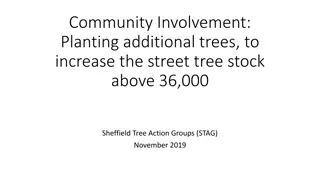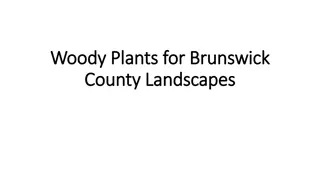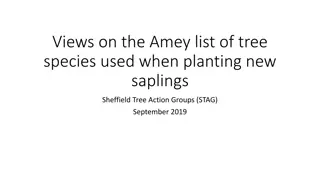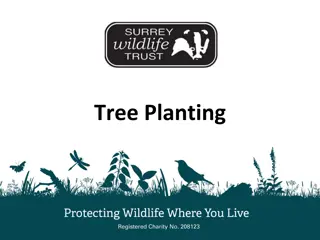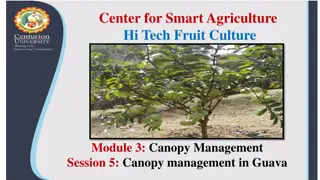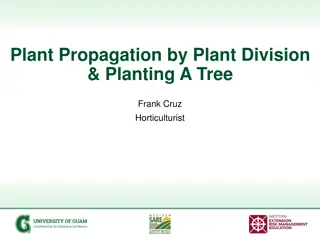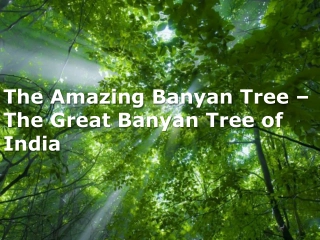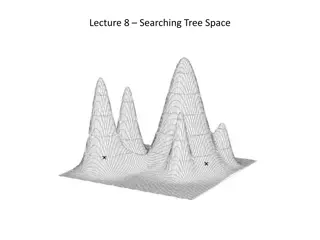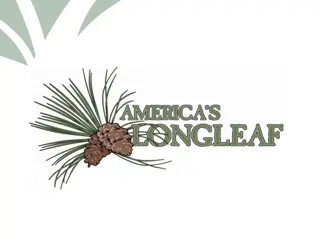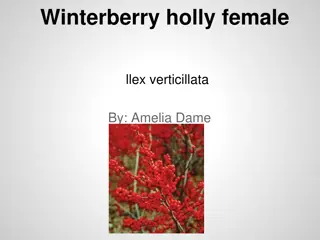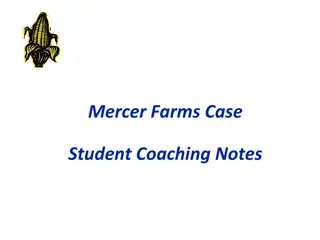Crestwood Community Tree Planting - Tree Species Overview
Explore the diverse range of trees recommended for the Crestwood Community Tree Planting project. From majestic oaks to colorful maples, each species brings unique characteristics and benefits to the urban landscape. Learn about their heights, spreads, foliage colors, and preferred conditions to make informed decisions for enhancing your community green spaces. Contact Doug Barker for more information on how to contribute to this green initiative.
Download Presentation

Please find below an Image/Link to download the presentation.
The content on the website is provided AS IS for your information and personal use only. It may not be sold, licensed, or shared on other websites without obtaining consent from the author. Download presentation by click this link. If you encounter any issues during the download, it is possible that the publisher has removed the file from their server.
E N D
Presentation Transcript
Crestwood + Casey Trees Trees for Crestwood Community Tree Planting (CTP) Height Spread Canopy Trees 1 Willow Oak Quercus phellos 40-60 30-40 2 Red Maple Acer rubrum 40-60 40-60 3 River Birch Betula nigra 40-70 40-60 4 American Sweetgum Liquidambar styraciflua 60-70 45 5 Black Tupelo (Black Gum) Nyssa sylvatica 30-50 20-30 6 White Oak Quercus alba 50-80 50-80 7 Northern Red Oak Quercus rubra 60-75 45 8 American Beech Fagus grandifolia 50-70 50-70 Evergreen Trees 9 American Holly Ilex opaca 40-50 18-40 Understory Trees Crestwood Contact Doug Barker (202) 882-9383 10 Serviceberry Amelanchier spp. 15-25 15 11 Redbud Cercis canadensis 20-30 25-35 12 White Fringe Tree Chionanthus virginicus L. 12-20 12-20 1
1. Willow Oak, Quercus phellos Canopy Tree Height: 40 to 60 Spread: 30 to 40 Medium to large tree Foliage: Light to bright green in summer and yellow, yellow-brown and russet in fall Characteristics: Handsome oak with willow-like leaves Best oak for overall texture and form Fruit: Small, round acorn about inch long with a shallow, saucer-like cup Note: Prefers acid soil and full sun Relatively fast-growing, tolerating poorly drained soil 2
2. Red Maple, Acer rubrum Canopy Tree Height: 40 to 60 Spread: less than or equal to height Medium to large tree Foliage: Green stems turn red in winter, new leaves are red-tinged, turning to green Fall color is deep red or yellow with red flowers Characteristics: Brings color to your landscape year-round Excellent for lawns, parks, or streets Fruit: Fruit is a red double samara Both the flowers are fruit are seen first in the spring before any other species flower or leaf out Note: Fast growing and tolerant of many soils 3
3. American Sweetgum, Liquidambar styraciflua Canopy Tree Height: 60 to 70 Spread:45 Large tree Foliage: Leaves turn yellow-purple-red in the fall, and stay on the tree quite late Characteristics: Deep, glossy green star-shaped leaves mark the Sweetgum Its shape is pyramidal, becoming more rounded with age Fruit: Woody multiple capsule 2 to 4 cm, popularly called a gumball Note: Avoid polluted sites 4
4. River Birch, Betula nigra Canopy Tree Height: 40 to 70 Spread: 40 to 60 Medium to large tree In the wild, they can grow up to 90 in height Foliage: Leaves are a lustrous green in the spring and summer, turning yellow in the fall Characteristics: Known for its peeling colored bark Bark contains a combination of colors including cream, salmon, orange-brown and cinnamon brown Fruit: Cone, a little over an inch long, filled with hairy seeds Note: Handsome specimen tree 5
5. Black Tupelo, Nyssa sylvatica Canopy Tree Height: 30 to 50 Spread: 20 to 30 Medium to large tree Foliage: Summer leaves are a dark green with a high-gloss appearance The most spectacular part of this tree is the fall foliage with many shades of yellow, orange, bright red, purple or scarlet that may appear on the same branch Characteristics: One of the most attractive native trees around Bark matures to medium gray and resembles alligator hide Fruit: Bluish-black and is loved by many birds Note: Prefers well-drained, acid soils, and full sun to partial shade 6
6. White Oak, Quercus alba Canopy Tree Height: 50 to 80 Spread: 50 to 80 Large tree Foliage: In late autumn, leaves turn a deep red and drop, or on younger trees the leaves remain throughout winter Flowers appear with the leaves in mid-spring Characteristics: The white oak has whitish or ashy gray bark, varying from scaly on smaller stems to irregularly platy or blocky on large stems Fruit: Acorn no longer than 1 7
7. Northern Red Oak, Quercus rubra Canopy Tree Height:60 to 75 Spread: 45 Large tree Foliage: Bristle-tipped leaves turn red in the fall The leaves have 7 to 11 waxy lobes Characteristics: Valuable fast-growing oak for lawns, parks, golf courses and commercial area Often used as a street tree in Urban areas throughout the Midwest and East Fruit: Nut, solitary or paired, to 1 long, variable in shape, but usually subglobose, enclosed at the base in a flat, thick, saucer-like cap; acorns mature and fall early Note: A good street tree, tolerates pollution and compacted soil 8
8. American Beech, Fagus grandifolia Canopy Tree Height: 50 to 70 Spread: 50 to 70 Large tree Foilage: Leaves emerge in late spring, changing from shimmering green to lustrous dark green to golden bronze in the fall Characteristics: Smooth bark A beautiful native tree Fruit: A three-winged nut (edible), enclosed by a prickly covering, 2 cm long Note: Plant in well-drained, aerated soil 9
9. American Holly, Ilex opaca Evergreen Trees Height: 40 to 50 Spread: 15 to 30 Medium tree Foliage: The leaves are simple, alternate, and have an elliptical shape. Known for its sharp, pointy dark green leaves Fruit: Fruits are a berry-likes, dull red rounded drupe that mature in October and persist into winter Note: Appreciated for its overall geographic adaptability Not often available in large landscape sizes in commerce due to its slow growth 10
10. Serviceberry, Amelanchier spp. Understory Trees Height: 15 to 25 Spread: 15 Small to medium tree Foliage: Flowers very early in the spring, usually ahead of other spring- flowering foliage Has a striking display of yellow to red foliage, with deep color saturation Characteristics: Perfect for naturalistic plantings It is multi-stemmed, upright, and blooms in early spring with petite, slightly fragrant, white flower clusters Fruit: The purplish-blue fruit is delicious in pies and jams and very attractive to birds. Note: The serviceberry is easily grown in average, medium, well- drained soil in full sun to part shade. It is tolerant of a somewhat wide range of soils, but prefers moist, well-drained loams 11
11. Redbud, Cercis canadensis Understory Tree Height: 20 to 30 Spread: 25 to 35 Medium tree Foliage: Purplish-pink buds occur along the branches in early march Dark green, heart-shaped leaves turn a nice yellow fall color Characteristics: It generally has a short, often twisted trunk and spreading branches The bark is dark in color, smooth, later scaly with ridges somewhat apparent, sometimes with maroon patches The leaves are alternate, simple, heart shaped Fruit: Flat reddish-brown pods about 1 cm wide and 10 cm long Note: Tolerant of a wide range of site conditions 12
12. White Fringe Tree, Chionanthus virginicus L. Understory Tree Height: 12 to 20 Spread:12 to 20 Medium tree Foliage: Dark-green, glossy foliage Not reliable for fall color Characteristics: Shrub or small tree with short trunk, narrow, oblong crown, and showy masses of fragrant, lacy, white flowers Fruit: Dark-blue, grape-like clusters of fruits are produced from female blossoms, usually hidden by the foliage Note: This species is quite tough and tolerates drought as well as wet soils; will grow in full sun or part shade http://www.cirrusimage.com/Trees/fringe_tree_2.jpg 13


